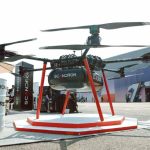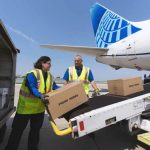The delicate business of transporting live animals
“Air transportation can be extremely stressful for animals and we try our best to minimize this & make sure that everything goes as smoothly as possible. That means tight coordination between all the actors in the supply chain to ensure that all the I’s are dotted & the t’s are crossed and a lot of active liaising before, during and after any movement.” – Coyne Airways CEO Larry Coyne
Transporting animals is an age-old practice and today’s modern, tech-savvy world allows them to be transported in the most humane, safe and secure manner.
Carriers describe this role as “very challenging” with the obligation to take into account that all species are different, needs specific attention, storage and handling conditions.
With animal lovers finding it easier to shop around online for pets—be it dogs or cats—and flying them over, the demand for transporting live animals is increasing.
All airlines—commercial passenger or cargo—that allow live animals on their flights follow strict guidelines in transporting them.
We spoke to a couple of airlines to find out what goes on behind before and during the transportation of animals.
American Horse Council reveals that at present there are 9.2 million horses across the US involving approximately 4.6 million people as horse owners, care takers, employees and volunteers.
According to the council, this industry has direct impact on the economy of $39 billion and if other factors such as suppliers, spending by spectators is taken into account, it may exceed $102 billion.
Hungary, a traditionally livestock exporter country, especially of horses, cows or sheep, now found new market opportunities for horses in China as the country’s appetite for breeding horses grows.
Pets and livestock
The most commonly transported animals by all airlines remain cats, dogs, live lobsters and crabs, including day-old chicks, horses and some zoo animals such as wolves, leopards, cheetahs, etc., except for brachycephalic or snub-nosed breeds, which cannot be transported due to issues involved with their breathing.
Coyne Airways has transported more sheep and cattle with quite a lot of working dogs, and also exotic animals in connection with the repopulation of Georgia’s Tbilisi Zoo after the devastating flood that hit in 2015. The airline is also seeing surges in animal movements around major holidays and festivities.
Budapest Airport transported a total of 3,000-4,000 animals so far in 2017. Half of them were smaller animals, such as cats and dogs that were transported to different countries all over the world. The other half was covered by special charters transports.
Jozsef Kossuth, Cargo Manager, Budapest Airport, said: “Special charters included the transport of cows to the Middle East and Russia, calves to Tel Aviv, and even a baby hippo with the help of Emirates Airlines, in addition to the 14 racehorses that were transported in the cargo hold of Cargolux’s modern Boeing 747-8F; animals of this size can only be transported by air over such long distances, and only on board large aircraft types.”
Animal transport regulations
Regulations and global standards such as the IATA Live Animals Regulations (LAR) ensure the transport of animals by air is conducted in a safe, humane and cost-effective way.
All the details of handling, feeding, watering, health and hygiene, personal supervision, information and protocols for the flight crew, are very well regulated. If staff is well trained and all the instructions are followed, the transport is no less comfortable for the animals than for the normal passengers.
Kossuth responds, “Our cargo handling companies organize the transport in line with international and local live animal regulations. The animals spend the minimum time necessary at the airport before being boarded on the aircraft.”
Coyne Airways CEO Larry Coyne said, “Air transportation can be extremely stressful for animals and we try our best to minimize this and make sure that everything goes as smoothly as possible. That means tight coordination between all the actors in the supply chain to ensure that all the I’s are dotted and the t’s are crossed, and a lot of active liaising before, during and after any movement.”
“For example, we spend quite a lot of time with clients making sure that they understand the relevant requirements and concerns for transporting animals, and we also engage the relevant ground handlers and crew at an early stage so that they are well-prepared. On the actual day, our Operations Supervisors perform final checks and go through a series of checklists to cover a variety of things from documentation to ensuring there is not a major swing in temperature for the animals on their journey.”
Emirates Senior Vice President Cargo Operations Henrik Ambak noted, “The transportation of live animals requires expert and sensitive handling with full compliance with the rules laid down in national laws, IATA’s (LAR) and other regulations such as (CITES). When it comes to actual shipment, various considerations also need to be taken into account, from the type of animal, breed, age and possible temperature requirements.”
In 2013, Etihad Airways became a member of the International Pet and Animal Transportation Association to strengthen its position as an accredited airfreight carrier of live animals, which recognizes the airline as a responsible carrier at an international level. The airline is also committed to compliant with the rules and regulations related to import and export of live animals worldwide, including IATA’s (LAR).
Furthermore, the airline is also a member of the UK Pet Scheme, allowing the carrier to carry pets from both London and Manchester.
Temperature specifications
Most airlines follow three types of temperature zones which vary between 2°C and 25°C. While many of the animals feel comfortable at temperatures ranging between 15-25°C, some animals like lugworms or certain types of reptiles require their environment to be kept a little cooler.
For the transportation of live tropical birds, hatching eggs and horses, Luxair Cargo follows the requirements of the shipper and carrier, as different types of temperatures are required for their transportation.
David Kerr, Vice President Etihad Cargo, noted, “Temperature requirements vary from animal to animal. We ensure that animals are kept within the appropriate temperature-controlled environment, from the pre-flight storage facility at our hub in Abu Dhabi, or onboard one of our freighter or passenger aircraft.”
According to Emirates Airlines, the following temperatures specifications are mostly derived from IATA’s LAR and are followed to the letter when transporting live animals on their aircraft.
Dogs 15 – 25 degrees
Cats 18 – 22 degrees
Gazelle 15 – 25 degrees
Lion/Tiger 20 – 29 degrees
Guinea Pigs 15 – 25 degrees
Laboratory mice 15 – 20 degrees
A day old chicks 18 – 23 degrees
Monkeys 18 – 30 degrees
Kangaroo 20 – 25 degrees
Special Training
Patrick Silverio, Luxair Cargo’s Special Handling Manager, said, “All our staff receive deep training by independent trainers as well as from the Veterinary Authorities. Most of our dedicated staff have already animal experience in their previous jobs be it a farmers or in animal protection tasks.”
“Due to the variety of animals that the airline carries, we ensure that our ground handling teams are knowledgeable about the requirements, as this is a specialized area of cargo transportation,” said Kerr. “In line with the IATA rules, all personnel involved in any aspect of the booking must be IATA’s LAR certified.”
“This means that all our personnel have attended and successfully passed a three-day training course with IATA, ensuring they are equipped with the appropriate skill sets & understanding to work in this area of the business. We also work with experts. Take horses for e.g. we work with their trainers and owners to ensure we can meet the specific requirement of that particular horse. The success of this area of the business has been built through adding the personal touch that the owners want.”
Safety precautions
AirBridgeCargo supplies special containers, including horse stalls and kennels, to ensure the comfort and safety of animals during loading and unloading and, of course, the flight. Special ground handling facilities are also available at majority of their online stations.
Air Bridge Cargo’s General Director Sergey Lazarev, said, “Aside from our proven expertise in safely transporting live animals, another key reason why customers choose ABC is the quality and capability of our modern Boeing 747 fleet. Our latest 747-8F aircraft provide four independently controlled temperature zones which enable us to create separate environments with a range of +4 to +29°C. This helps us to ensure we create the most comfortable temperature onboard the aircraft for the live animals we are carrying.”
In addition, the cargo carrier also provides the possibility for cargo attendants to accompany live animals onboard.
Carrying specifications
The animals are usually transported in pallets and crates, in line with International Air Transport Association’s (IATA) Live Animals Regulations (LAR), the worldwide standard for transporting live animals by commercial airlines.
Air Bridge Cargo’s Sergey Lazarev said, “We have a special product ‘abc Care’ for live animal movements and it is delivered by live animal specialists in the airline. We now have more than 10years’ experience of safely transporting a wide variety of live animals for breeding programs, conservation projects, sporting and entertainment events. All of the services we provide fully comply with IATA’s AVI live animals regulations and our special advisors are on hand to liaise with each customer to provide the help and support they need, and to answer any questions they have regarding the transportation process.
“At ABC, all live animal bookings are given the highest priority during the booking and cargo loading processes. This aims to ensure the shortest possible transit times and protects the welfare of animals to ensure their journey is as timely and comfortable as possible, both on the ground and in the air. We also work closely with local airport authorities and our ground handling partners so they are aware of each shipment and the need for a smooth handling process.”
Martyn Griffin, Sales Manager, Coyne Airways, notes, “The animals are delivered just a few hours before the flight to reduce the time they spend in the cages and in the warehouse, and everything is ready for when they arrive so they board quickly. Like flying first class.”
Coyne says proper and appropriate cages are key to ensuring the safe transport of live animals. The cages should always be strong, properly ventilated, leakproof and escape-proof, for the good of the animals, the crew and the aircraft.
“However, the same cages cannot be used for all species: some animals must be transported individually, and others may be transported in groups. When animals are transported in groups in the same cages, care must be taken to ensure that only animals of the same species, sex, size and weight are loaded together. It is also important to ensure that the cages are not overloaded, which may reduce airflow to the animals and also affect the cages’ ability to withstand turbulence, and take-off and landing,” he said.
“We take care in considering where on the aircraft the cages are loaded: for example, we would not place cages with predator and prey next to each other, nor would we tempt fate by placing sexually mature male and female animals in close proximity. We also try to ensure that animals are loaded last and offloaded first to minimize their time on the aircraft, and indeed in transit generally,” he added.
Given the growth in live animal exports, Budapest Airport plans to build facilities dedicated specifically for animals in the new cargo base to be constructed over the coming years.
Thus, in a few years’ time, it will be possible to fly almost any animal requiring special treatment or care from Budapest Airport, to any part of the world, according to Kossuth.
“We are in the process of transforming our cargo facilities as part of BUD: 2020 Development Program, which will help us to cater for the expanding live animal export market,” he says.
ULD management specialist Jettainer recently announced it is expanding its leasing services by providing comfortable transport boxes at short notice. The special ULDs can be leased for one day or up to several months. A wide variety of ULDs can be leased from Jettainer at times of peak demand via its 24-hour hotline.
The stables are now available for transporting the elegant four-legged creatures above the clouds from the JettHub in Frankfurt – and, if required, from any other destination around the globe.
The special design of the horseboxes, which can transport up to three animals, not only makes it easy for the animals to enter with its particularly broad ramp, but it also has an adjustable partition in the upper area that provides ideal visual protection between the horses. Modern polymer materials inside the box and a non-slip stand ensure that the animals can travel without injuring themselves.
If the horsebox has to be returned empty, it can be collapsed using a foldable ‘drop top’ and transported on the lower deck to save space. This means that the flying horseboxes are not only safe and comfortable for the animals, but are also efficient and save space when being handled.
“We’re noticing a huge demand for flying horseboxes and can now offer our customers flexible leasing concepts that are even better tailored to their needs,” says Martin Kraemer, Head of Marketing & PR at Jettainer, explaining the latest development.
Animal protection
With the latest moves by many airliners around the globe to ban the carriage of hunting trophies and endangered species, many are now adopting a strict ethical cargo policy identifying shipments not acceptable for carriage.
Volga-Dnepr Group continues to strongly support the programme to reintroduce endangered Przewalski horses in the Ural steppe of Russia by ensuring a safe delivery of the latest 14 horses from the Hortobágy National Park in Hungary recently.
The horses each travelled in their own special horse stall onboard a Boeing 737-400SF freighter operated by Atran Airlines, the Group’s regional and express cargo airline, in cooperation with Volga-Dnepr Airlines and AirBridgeCargo Airlines.
The temperature in the cargo cabin was maintained at a comfortable 18-20°C for the four-hour nighttime flight from Budapest Ferenc Liszt International Airport to the city of Orenburg on the steppe beyond the Ural Mountains. Experts from the national park were on hand to ensure the well being of the horses during the loading process and on arrival in Russia.
Przewalski horses are one of the rarest and most endangered subspecies of wild horse on the planet and had become extinct in their original habitat, the Central Asian and Mongolian steppe.
With the support of the Hortobágy National Park, which currently has a herd of 380 Przewalski horses on a protected area of 2,400 hectares, they are slowly being reintroduced into the Orenburg nature reserve.
Emirates SkyCargo is very cautious as to what they carry on their aircraft. The list of prohibited animals on the aircraft include: dogs (aggressive fighting breed), elephants that are below 5 years old age, pigs, poisonous snakes (zoo-zoo transfer only) and primates (zoo-zoo transfer only).
The airline also does not carry shark fins and hunting trophies of CITES I listed animals, including rhinos, elephants, leopards and lions.
Etihad Airways adheres to IATA’s regulations pertaining to animal handling and acceptance. These rules include guidance on kennel specifications, medication, state variations and many other areas of the process.
The airline also adheres to regulations protecting endangered species and overall animal welfare as covered under CITES. It does not accept live animals intended for use in scientific research. In 2015, the airline took the decision to not accept the carriage of hunting trophies using animal products.














